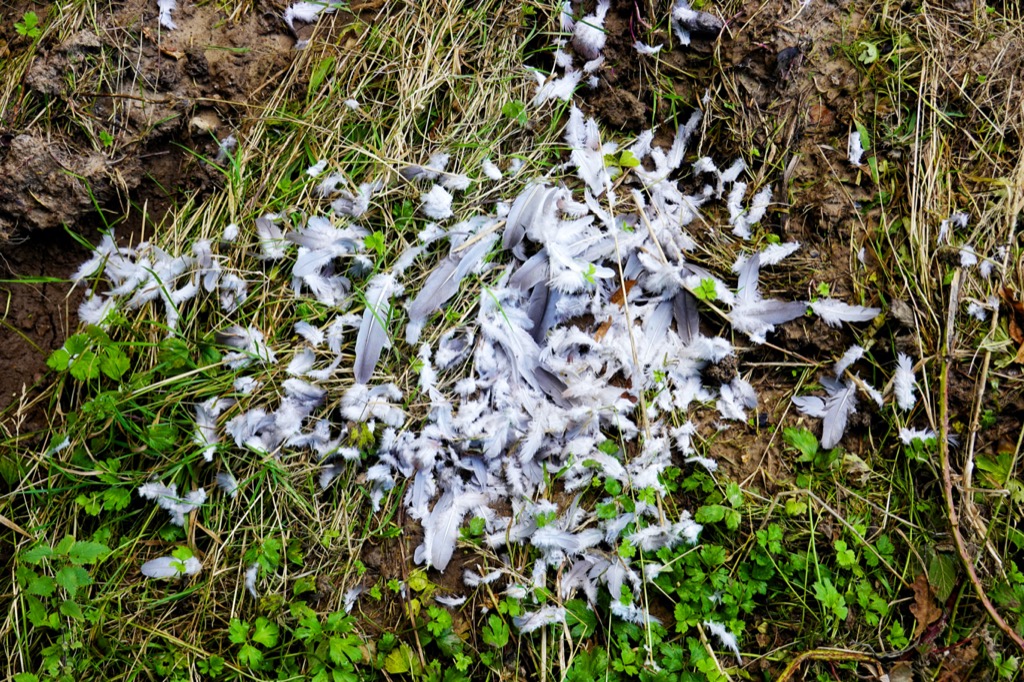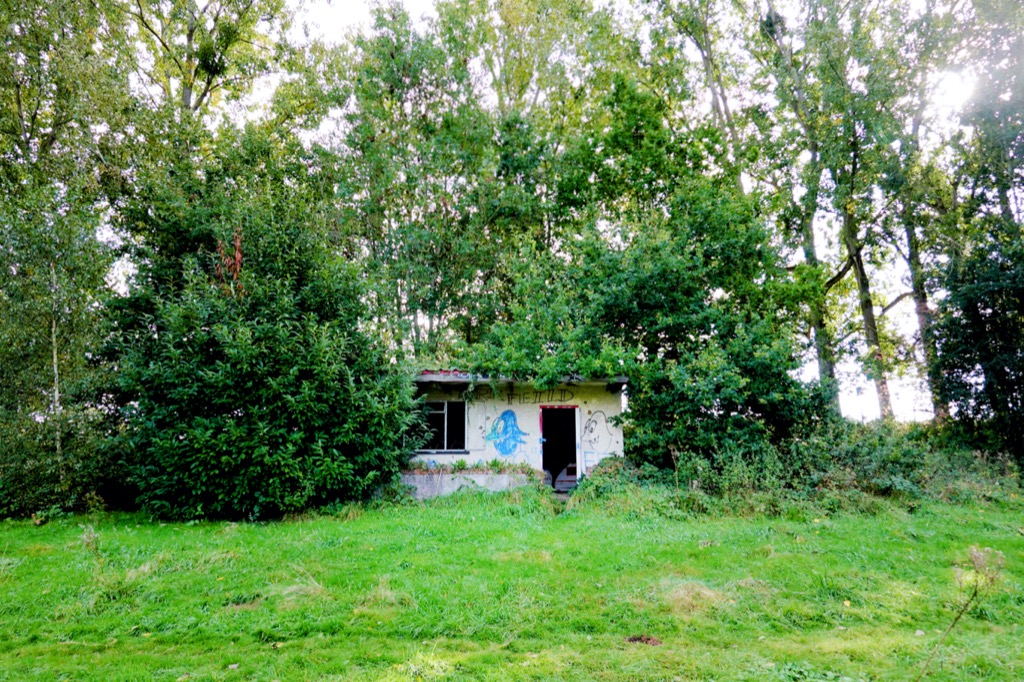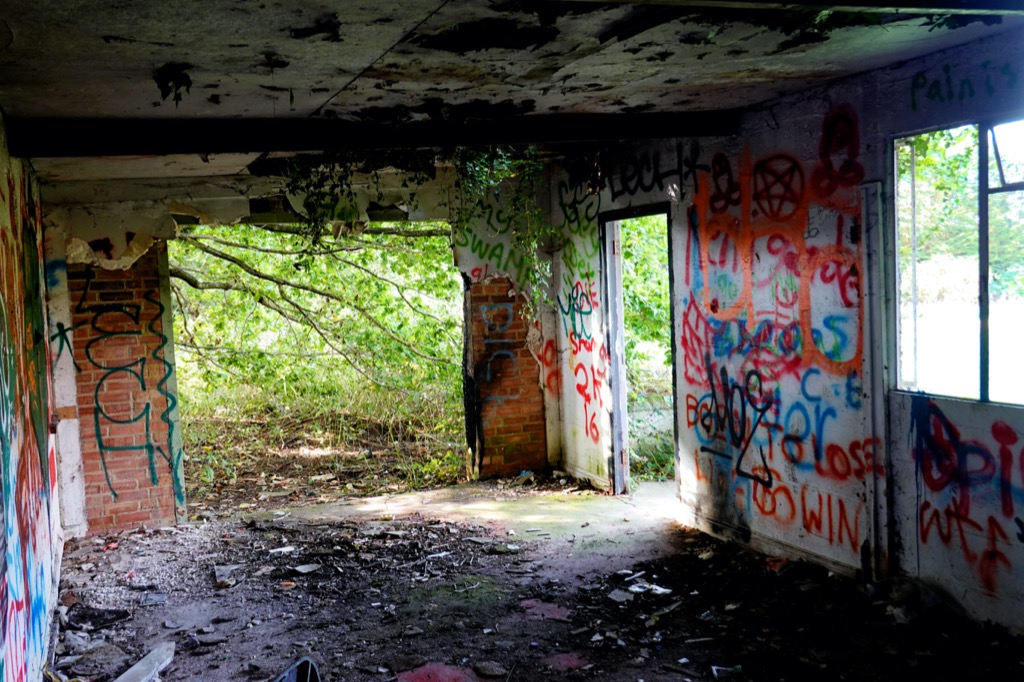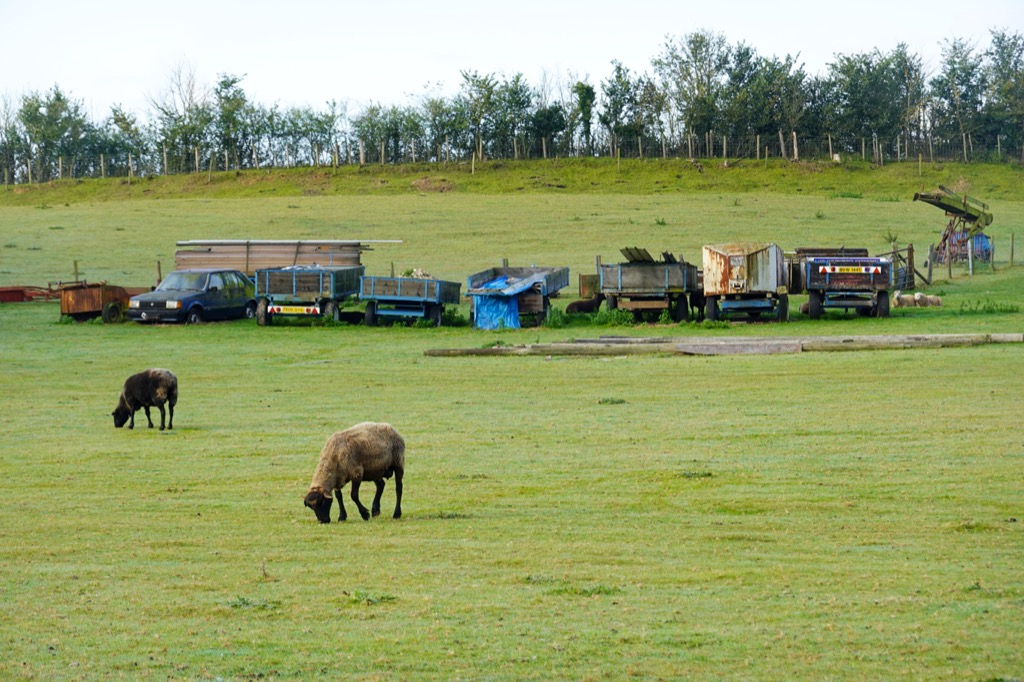[EDIT: you can read the stories from my progress across my map here.]
The Duke of Wellington was one of Britain’s greatest military heroes and Prime Ministers. Although he was born in 1769, he lived long enough to have his photograph taken (which is impressive considering that he was involved in 60 battles). As a firm fan of internet rabbit holes, I’m surprised not to find myself diving into military history, but rather rubber boots and beef cooked in pastry.

Military uniforms, fame and fashion have always been closely linked. Regimental dress uniforms were designed to stand out and impress young men into joining up – with the added bonus of attracting the opposite sex in the process.
When the French Revolutionary and Napoleonic wars (1792–1815) brought much of Europe into battle, it is hardly surprising that they also introduced many military fashions into civilian life.
In the 1790s officers in the British Army wore boots called ‘Hessians’, which were named after the German mercenaries who fought alongside the British in the American War of Independence (1775–83). Made of soft, highly polished calfskin, they were knee high with a curved top, similar to a riding boot, but with a ‘V’ shape, decorated with a tassel, cut into the front.
From the 1790s onwards, ordinary soldiers stationed in hot climates began to wear lightweight linen trousers, instead of their normal woollen breeches. Back home, the fashion for wearing these tight-fitting trousers caught on in the 1800s. The trouble was that the tassel on ‘Hessian’ boots, which were designed to be worn with traditional breeches, made them difficult to wear with these newly fashionable trousers.
At some point in the early 1800s Arthur Wellesley, then Viscount Wellington, asked his shoemaker, Mr George Hoby of St James’s Street, London, to make a boot which was easier to wear with the new trousers. Hoby removed the tassel and cut the boots lower to make them more comfortable for riding. Even before his great victory over Napoleon at the Battle of Waterloo in 1815, Wellington was on his way to becoming a fashion icon. By 1813, and the victory at the Battle of Vittoria, Wellington’s fame led others to start wearing this new style of boot. They duly became known as ‘Wellingtons’.
In 1856 the Edinburgh-based North British Rubber Company had started to manufacture Britain’s first rubber or ‘gum’ boots. With the name of the duke still retaining a patriotic pull on consumers, these new boots were soon also renamed Wellingtons in Britain. Their popularity did not become widespread until the First World War, when in 1916 the company was commissioned to produce millions of pairs as standard winter kit for ordinary soldiers, to prevent ‘trench foot’, a medical condition caused by prolonged exposure to damp.
At the end of the war, soldiers brought them home and introduced these extremely practical items of footwear to farms, gardens and allotments all over the country. A century later, music festivals and fashion catwalks are still benefiting from this wartime legacy.
Meanwhile, Gordon Ramsay’s love of Beef Wellington is well known – he says that ‘Beef Wellington has to be the ultimate indulgence, it’s one of my all-time favourite main courses and it would definitely be on my last supper menu’. It is generally agreed that the dish was created in celebration of the first Duke of Wellington, Arthur Wellesley, and his victory at the Battle of Waterloo on June 18 1815. The Duke was given his title after defeating Napoleon Bonaparte the year before, and not long after he became Prime Minister. Such an iconic character needed immortalising, so (naturally) they named a pastry ensconced beef dish after him.
Wrapping meat in pastry has been a favoured culinary technique in many countries for many centuries- The Greeks were the first to wrap a flour and water paste around their meat to seal it before cooking, and the Cornish Pasty (the stalwart of miners’ lunchboxes) has been around since the 14th Century. However, the Beef Wellington most closely resembles the French filet de boeuf en croute and may well have been renamed the Beef Wellington after the Battle of Waterloo – rather than being a dish specifically created for the Duke of Wellington.
Whilst Wellingtons are extremely popular in Europe, they have also found fame in the United States. Beef Wellington was reportedly Richard Nixon’s favourite dish (it was included in the White House cookbook), and in 1965 the New York Times outlined the gold standard of the dish as a beef tenderloin cooked in a rich pastry crust and ‘embellished with pate de fois gras, truffles and cognac’.
What led to me mulling over the Iron Duke (or Old Nosey) and salivating at the thought of a delicious meal was the Duke of Wellington pub I stood before. Yet it dated from 1516, a whopping two and a half centuries before he was born. I wondered about all the lives this old, but thriving pub had lived, all the stories it could tell about 500 years of customers… I wondered, for example, when they decided to install a Petanque terrain at the pub, a game far more Napoleon than Wellington. But a quick Google search couldn’t tell me what the pub used to be called, so I climbed onto my bike and set off to explore today’s grid square.

Although it is mid-October now and the grass is wet with morning dew, the sun is warm and I’m surprised to still be in short sleeves. The leaves on the trees are far greener than I associate October with. It is another symptom of our warming world. I am not alone in noticing this. ‘A few years previously the London planes [trees] at the Cenotaph also caught the eye of Tim Sparks, who noticed how green they seemed to be despite it being the first Sunday of November. Trawling through newspaper archives he collated as many photographs as he could of every Remembrance Day over the past century, from ceremonies in both London and Paris. The images depict a remarkable transformation. In 1919, when the first ceremony was held in London, the trees were almost totally without leaves. Later pictures depict similarly cold weather with Queen Mary watching from the royal balcony swaddled in furs.
But from the 1980s onwards, the trees have appeared increasingly green.”
I pedalled first around the seemingly inevitable new housing developments that are covering my map. This one had smart and spacious homes belonging to the sort of people who like having shiny, powerful cars. Lined up outside the front doors were a Range Rover, Land Rover, Tesla, Audi, GTR, BMW and a Mercedes before I reached a home with a more modest Toyota.


A few homes had Halloween wreaths on their front doors and a Virginia Creeper blazed a brilliant blood red up a garden fence. I was pleased to see two garden gnomes outside one home. I cannot ever imagine spending money on something like that (for myself or even as an ironic gift) – Thoreau’s line about “The cost of a thing is the amount of what I will call life which is required to be exchanged for it, immediately or in the long run” rings loud in my mind – but it does amuse me that people enjoy having a gnome heading a football outside their homes.


When Sir Charles Isham brought 21 terra cotta garden gnomes to England to decorate his 90-foot rockery in 1847, he created a sensation in the United Kingdom for bearded garden helpers. Sir Charles had found the statues in Nuremberg, Germany– a country steeped in the folklore of gnomes, trolls, fairies and other forest folk, where they are known to be cheery, if not slightly mischievous, creatures who offered late night assistance in gardens and the protection of property. The allure of having quiet helpers in the garden has a long history, dating back to the second century AD, when the Roman emperor Hadrian had hermits living throughout his villa’s garden. This idea caught on again in 18th-century England, when wealthy landowners would hire a person to be an “ornamental hermit” in their garden. Contracts spelled out the do’s and don’ts of the job, which included living in a rustic, unheated outbuilding (or hermitage); not speaking to anyone; not washing; wearing disheveled tunics; and letting the body go unkept—as in growing long fingernails, toenails and beards. These recluses provided the appropriate melancholic ambiance that was fashionable in Georgian England. Today, garden gnomes have become a bit of an endangered species when it comes to lawn ornamentation, but cyberspace and social media have offered them a refuge where they thrive. With web-enabled photo sharing taking off at the start of the 2000s, the tireless garden gnome again became a pop culture giant as the key figure in the sports of “gnome-spotting” and “gnome-napping.”
Gnomes around the world were being snatched up, or liberated, as the French Front de Liberation des Nains de Jardins (FLNJ, also known as the “Garden Gnome Liberation Front”) calls it, to become “gnomads” and to see the world. After ending up in front of exotic locales such as the Taj Mahal and the Great Sphinx, they would sometimes return with a photo book in hand to showcase their adventures.
Behind the houses an area of ground had been set aside to become a recreation area, with gravel footpaths and lots of young saplings in plastic tubes. I liberated an apple from a waist-high tree and crunched it as I rode. An interesting-looking pond had been fenced off and festooned with signs warning ‘Danger – Deep water. Keep out.’ I understand, of course, the need to keep the young children who live there safe. But we also need to get people engaged with nature and motivated to care for it and live more sustainably (perhaps with fewer shiny, powerful cars?). Fencing off local nature is not going to help with that. Perhaps a compromise could be an access stile and more nuanced signs balancing the hazards of water with the advertisement of a fabulous bit of nature and the benefits of poking around by a diverse pond?


Robins sang loudly in the warm sunshine, but the motorway’s roar was even louder. Living by a main road like this will be so much quieter and healthier once we replace our shiny, powerful cars with electric vehicles. It will make such a difference to so many aspects of life. I followed a path to a footbridge and crossed over. The path ran alongside a field right beside the motorway. The smell of ploughed and rolled earth against the roar of the highway was discordant. I wondered what the ploughed field had been, what will grow there next. This feels like an in-between time, a caesura amongst the seasons.


The path led me beyond a windfall of shiny sweet chestnuts and the fluffy feather remains of a fox’s pigeon dinner into a pretty slice of woodland crimped in between the road and the ploughed fields. Spiders’ webs across the path brushed against my face. After all, Halloween is coming soon. On the fringe of the wood was a peaceful 12th Century church. I sat on a tomb and enjoyed the unseasonal sunshine. Hops vines grew across one of the church windows and tendrils wound their way heavenward up the copper lightning conductor.


This woodland of sweet chestnut trees, enormous pines and occasional sturdy old oaks has mostly made way for yet another new identikit housing development which covered almost a quarter of my grid square. There were mums and toddlers in the playground and people strolling around walking their dogs. Pedalling around the streets I felt my enthusiasm flagging, for this map, for this project’s relentless quest to be curious, upbeat and positive. To be fair, it was a very pleasant place to live, which presumably is why people have chosen to live here by the hum of the motorway. It’s all pretty fine and pleasant if you’re after a fine and pleasant life. But I want to be back amongst proper nature, proper landscapes: big views, big mountains, ocean waves, rushing water. And I miss the sort of people who choose to live and work in those wilder places.
Having said that, I realise that there are a thousand and one reasons we can’t all like in log cabins in Montana. For all those masses of us, noticing the wildness that is around us is a fine thing to do. I listen to the static squeaks and fizzes and pops of starlings in the bushes by a playground. It reminds me of the mysteries of trying to tune a shortwave radio in the middle of the ocean at night. I walk round the pond in the centre of the housing development. Fenced, yes, but it’s lined with willow and birch and the reeds and lily pads in the water can shelter many different species. (I’m not sure they needed to stock the pond with hundreds of bright orange goldfish though!) And pushing up on every grass verge and at the foot of beech trees are loads of weird and wonderful mushrooms.




Commonly referred to as the Pleated Inkcap, and sometimes as the Little Japanese Umbrella, Parasola plicatilis is a very delicate member of the inkcap group of fungi. It occurs in short grass. This is one of the many short-lived grassland fungi that appear overnight following rain; the fruitbodies develop, expand, shed their spores and decay within 24 hours and by the next morning there is usually no evidence of them ever having existed.
There were also lots of Coprinus comatus, the shaggy ink cap, lawyer’s wig, or shaggy mane: a common fungus often seen growing on lawns, along gravel roads and waste areas. The caps are white, and covered with scales—this is the origin of the common names of the fungus. The gills beneath the cap are white, then pink, then turn black and secrete a black liquid filled with spores (hence the “ink cap” name). This mushroom is unusual because it will turn black and dissolve itself in a matter of hours after being picked or depositing spores. When young it is an excellent edible mushroom provided that it is eaten soon after being collected (it keeps very badly because of the autodigestion of its gills and cap).
Hundreds of mica cap mushrooms had pushed through the grass by a rotting tree stump, pale brown and clustered together. Like many fungi they were hard at work decomposing the stump and recycling its nutrients. Most fungi get organic compounds from dead organisms. They are decomposers called saprotrophs. A saprotroph feeds on any remaining organic matter after other decomposers do their work. Fungi use enzymes to digest organic remains and then absorb the resulting organic compounds. As decomposers, fungi are vital for the health of ecosystems. They break down nonliving organic matter and release the nutrients into the soil. Plants can then use the nutrients and pass them on to herbivores and other consumers.
Alongside them lay a discarded plastic drinks bottle, sadly beyond the decomposing powers of even these magical mushrooms. There was a small glass bottle of Pinot Grigio too, made in Italy and described by the Co-Op’s blurb as safer than Alcatraz! Are you seeking a wine with the emphasis on refreshment rather than rich fruit flavours? Then this could be the one for you. Chill it down, get some nibbles on the table and relax? And on that note I got up off my hands and knees, waved goodbye to the mushrooms and pedalled homewards.









Comments